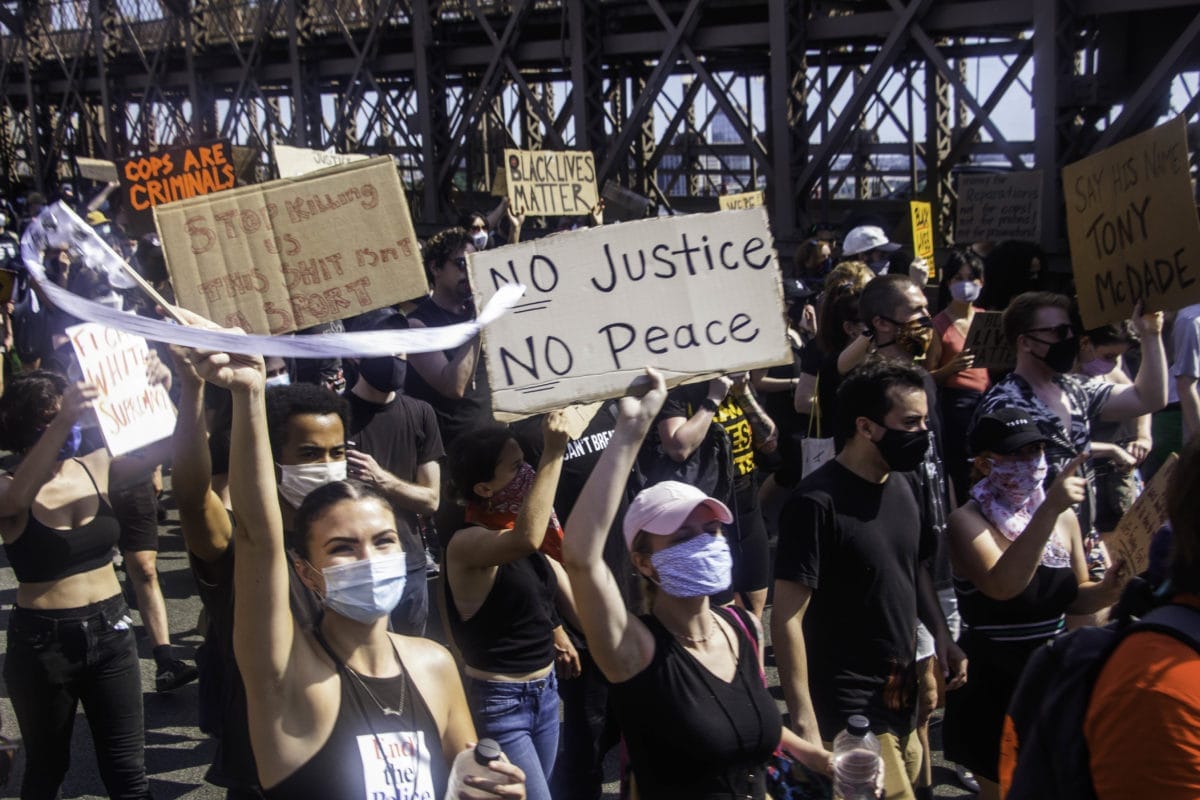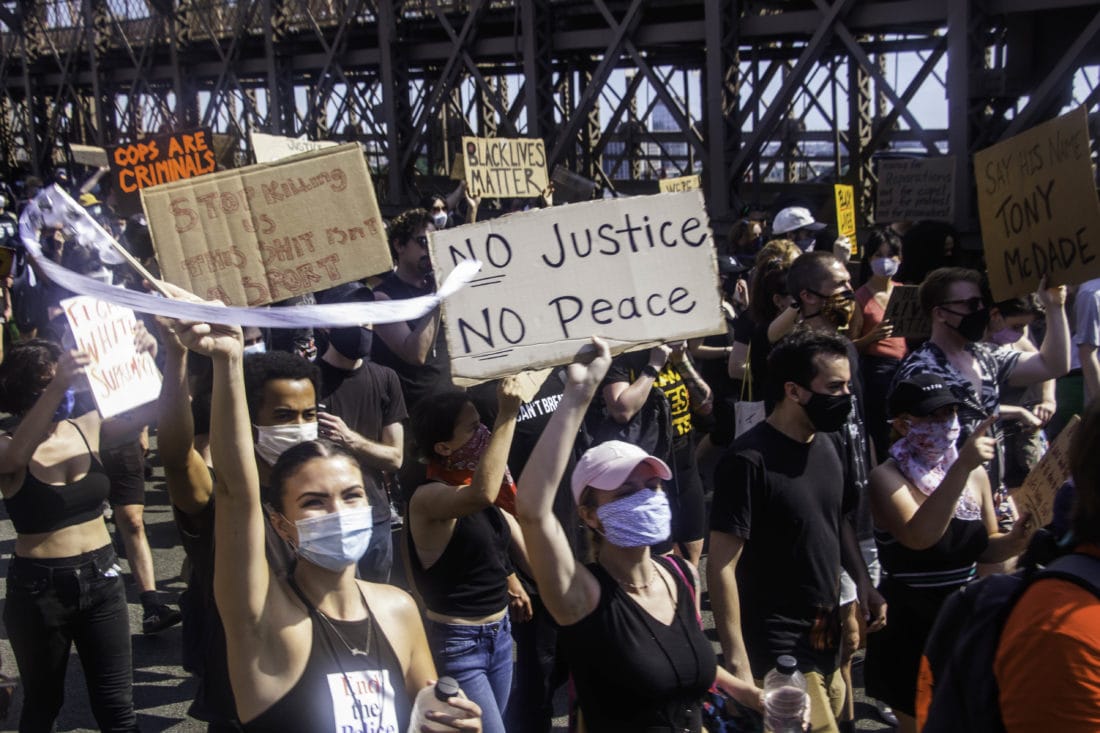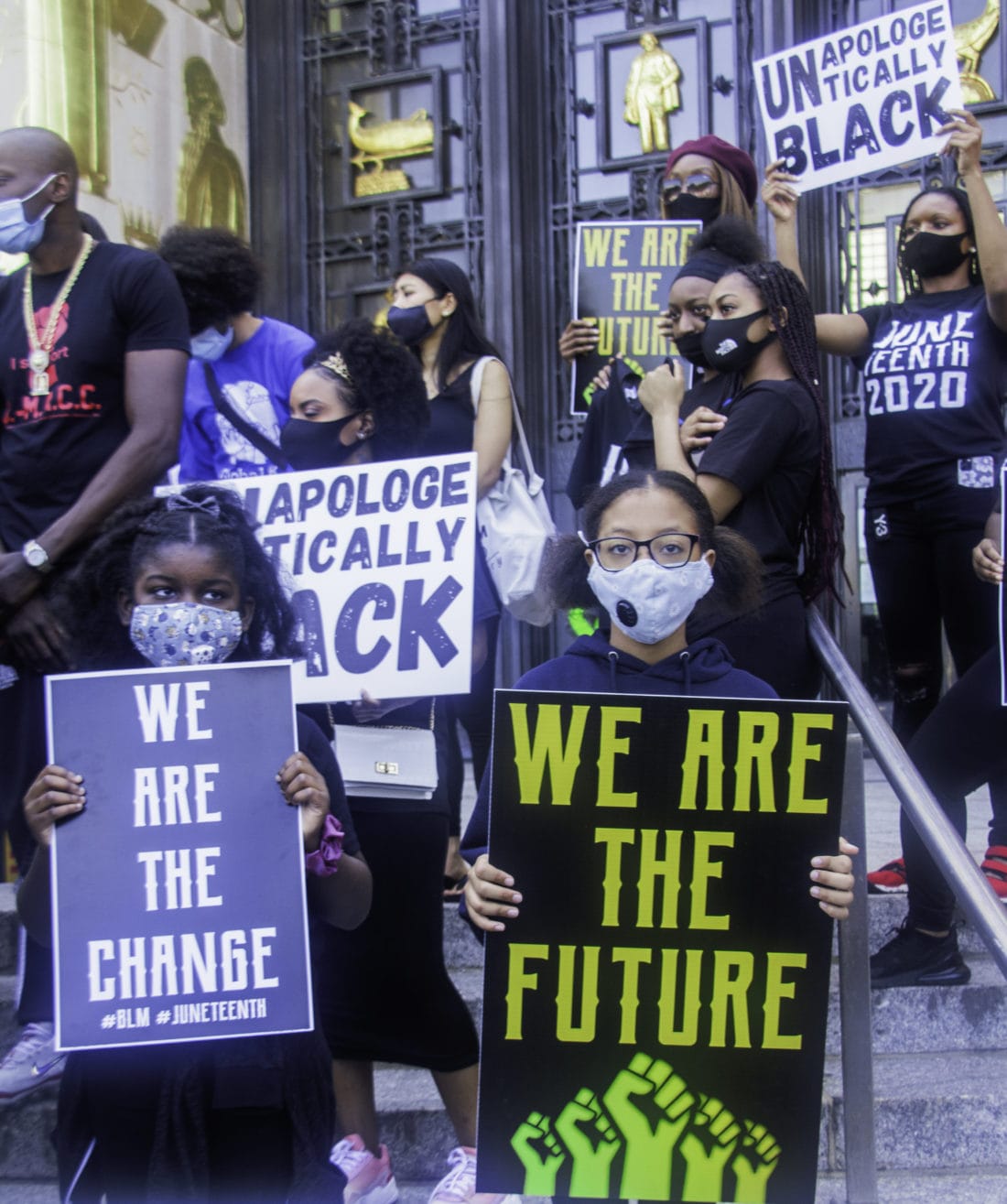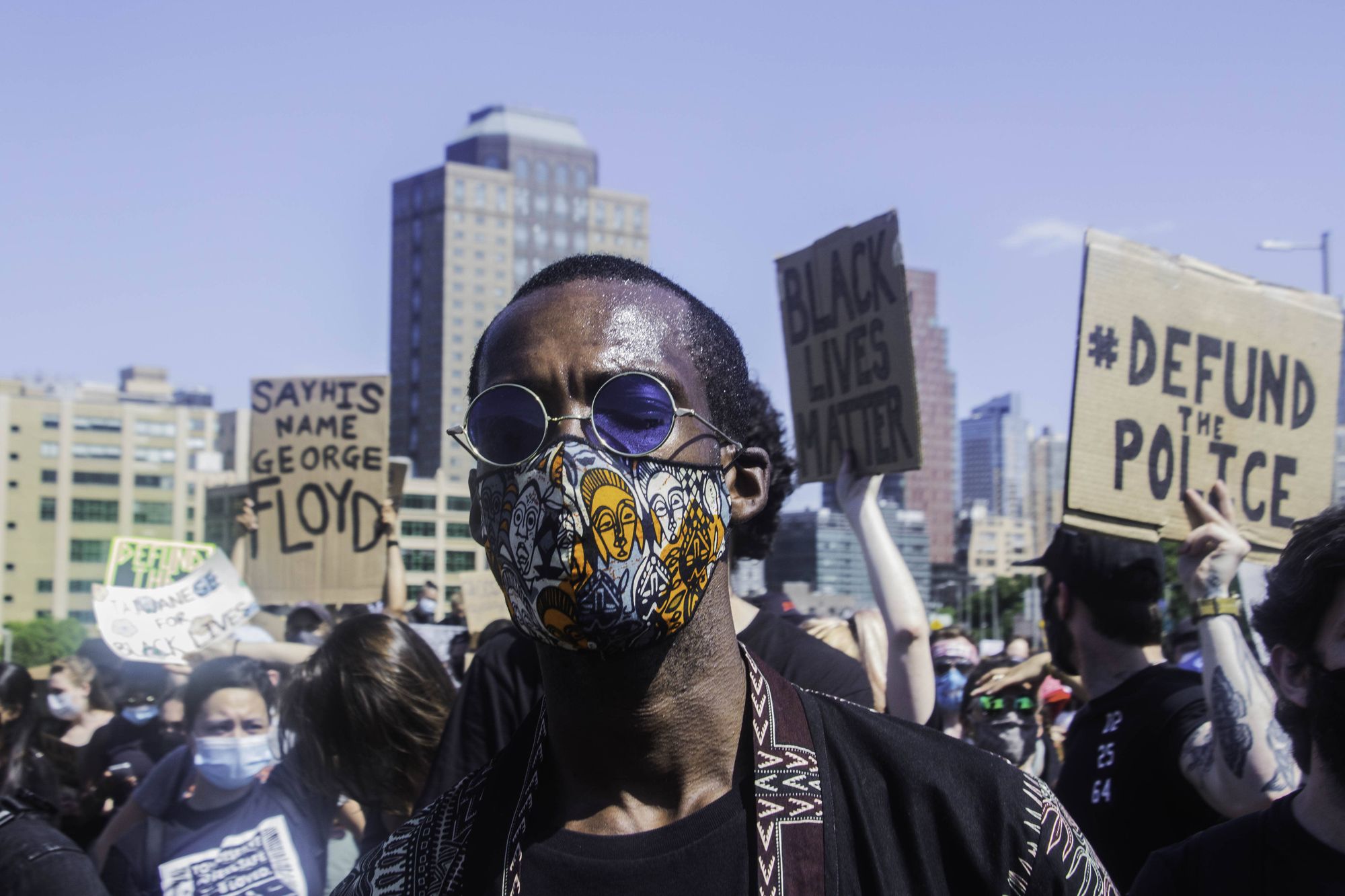How Mindfulness Helps Students in Brooklyn School Cope With Pandemic And Social Justice Issues


Students may be drawn first to the calming impacts of mindfulness, but mindfulness can also be seen as empowerment – a way to eliminate the internal obstacles that stop them from stepping fully into their power, dignity, and creativity – essential tools on the path to racial justice, and essential tools on the path to real freedom and equality.
Over the four years since I started a mindfulness program at Cobble Hill High School in Brooklyn where I teach, I’ve watched student after student find their power by turning inside, where it was waiting all along. In the process, students learn to be strong advocates for themselves and for their communities.
During the Spring 2020 semester, more than one student wrote, “Mindfulness doesn’t mean you always have to be peaceful.”
Several students shared how mindfulness has helped them cope with the murders of George Floyd, Breonna Taylor, Ahmaud Arbery, and others, and also with the ongoing pandemic.
“What stood out was how much more this was affecting me than I realized, until I actually sat and broke down what I was really scared and worried about,” shared one student. Another wrote, “You have the right to be completely angry or sad, but mindfulness helps you break away and meditate to calm down.”
Students had a full semester of mindfulness before the pandemic, but I had no idea how it would play out once they were in remote learning and almost totally on their own. We started using a popular mindfulness app to support us, and many students dove deep, some understanding the benefits of mindfulness for the first time. One student shared that while every member of his household was sick with COVID, he would practice daily on his balcony to stay sane.
Teachers have been independently bringing mindfulness to NYC students for twenty years or more, but it wasn’t until 2017 that the New York City Department of Education placed their official stamp of approval on mindfulness instruction as a valid option for meeting the social and emotional needs of students, appointing Barnaby Spring as the first-ever Director of Mindfulness.
Mindfulness in Schools for Student Wellness & Equity
Mindfulness is learning to pay attention in a certain way. In the words of mindfulness pioneer Jon Kabat Zinn, “Mindfulness meditation is the awareness that arises from paying attention, on purpose, in the present moment and non-judgmentally.” Mindfulness training involves choosing a focus such as the breath, then calmly noticing whenever the attention shifts, and gently returning it. In this way, students build up the ability to concentrate and remain present with their experiences.
Mindfulness instruction has implications for helping students develop healthy relationships, resilience, empathy, motivation, the ability to make responsible decisions, and the ability to effectively regulate emotions.
These are important benefits for all students, but may be particularly important for students of color. Resulting from centuries of oppression, Black and Brown students disproportionately suffer from poverty and loss. Having to cope with racism on a daily basis also takes its toll. According to the Health and Human Services Office of Minority Health, African Americans are 20% more likely to experience mental health problems than White Americans. In addition, there are multiple barriers for Black and Brown people when it comes to receiving adequate mental health services despite the likely added stressors that many face.

Mindfulness training in schools can help to fill this urgent gap.
Mindfulness supports students in confronting internalized stereotypes and processing painful experiences when they have been marginalized, judged, or accused. In the words of a 9th grade student, “Mindfulness is beneficial because it relieves stress and anxiety and lowers chaos in your emotions.”
Dr. Donald Fennoy, superintendent of schools in Palm Beach County, Florida, created a division for Student Wellness & Equity after the start of the protests following the murder of George Floyd.
Fennoy is not the only school leader to connect wellness and equity.
In a 2019 interview, Brooklyn Borough President Eric Adams stated, “We put a greater level of emphasis on the academic stability of a child, and not the emotional stability, and that’s a big mistake.” Adams, himself a disciplined meditation practitioner, argued that teaching students mindfulness, a priority for Brooklyn schools, allows students to “become their own healers,” and begin to address PTSD, grief, the impacts of racism, and the stressors of daily life.
“The overwhelming number of our million plus children are living with trauma every day. We have become extremely successful at masking trauma and normalizing it. It’s not a black eye, it’s not a broken arm,” Adams shared. Rather, trauma and PTSD are internal, invisible injuries.
I asked, “Do you think that students of color might stand to benefit in particular from mindfulness because of the added burden of having to deal with racism?”
Adams responded, “The first step forward is to acknowledge the fact that we treat people differently based on how we see them because of our predispositions. Black and Brown students are dealing with an obstacle that’s larger than their White counterparts. And acknowledging that doesn’t mean their White counterparts are racist, it just acknowledges the fact that we come from a country with a history.”
Studies published between 2009-2020 in Psychological Bulletin, School Psychology Quarterly, and other journals indicate that students who receive mindfulness instruction tend to have better focus, more ability to self-regulate, less stress, healthier relationships, and less incidents that lead to disciplinary consequences, which is of particular significance since Black and Brown students tend to receive harsher punishments both in schools and the judicial system.

Mindfulness Helps In Teaching, Too
Mindfulness can also positively impact the adults in school communities.
The first layer of mindfulness, decreased stress and improved mood, can support teachers in meeting students with patience and understanding.
Another layer, when practitioners naturally begin to examine the workings of their minds, has other implications. Practitioners begin to note self-talk and repetitive thoughts, to monitor the body’s feedback, and to examine underlying stories. For many, this leads to a decrease in the impacts of implicit bias.
Committed mindfulness practice leads to a key insight: that we are profoundly interconnected. The small-minded categories and distinctions we make crumble when subject to intense scrutiny. This realization leads to increased empathy and the knowledge that injustice anywhere affects every one of us – a counteragent to individual racism that can lead to systemic impacts.
In addition, when school leaders and teachers develop the ability to stay present with discomfort, a key component of mindfulness training, it may be easier to ponder difficult personal and systemic questions, and lead to greater transparency and accountability – important attributes for systems that are working toward anti-racist goals.
No one knows what the coming school year will look like, but even in the best case scenario, we will have to cope with stress, uncertainty, and powerful emotions. Mindfulness is an important ally as we weather these storms, and work toward a brighter future.




